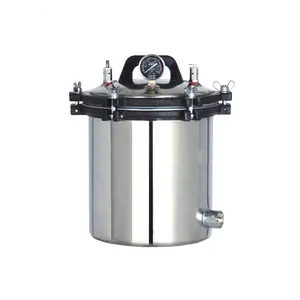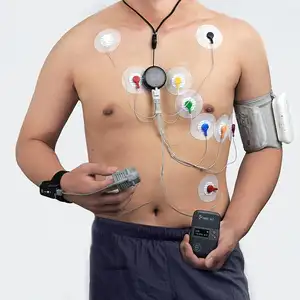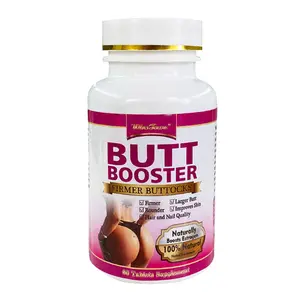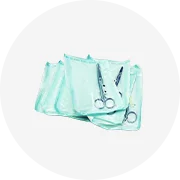आपके उद्योग में लोकप्रिय



चिन्तन विशद तोता जंगली चिकन पक्षी के आकार का मजाकिया पालतू च्यू कुत्ते स्क्वीकी लेटेक्स टॉय
₹105.78 - ₹214.93
न्यूनतम ऑर्डर: 500 नग







अन्य छोटे पालतू फीडर मोलर पत्थर इंटरैक्टिव हैम्स्टर खिलौना पशु आपूर्ति तोता खिलौना
₹53.31 - ₹59.24
न्यूनतम ऑर्डर: 300 नग
शिपिंग प्रति टुकड़ा: ₹13.54

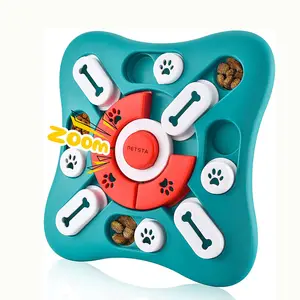
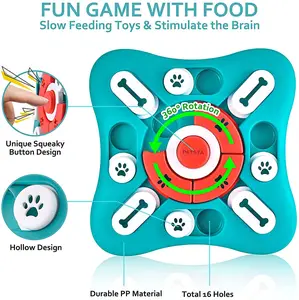




बुद्धिमान रिमोट कंट्रोल पालतू पहेली खिला खिलौना मज़ा मस्तिष्क-उत्तेजक इंटरैक्टिव पहेली कुत्ते के खिलौने
₹126.93 - ₹270.78
न्यूनतम ऑर्डर: 2 नग





आलीशान कुत्ता खिलौना आलीशान कुत्ता खिलौना तोता पालतू चबाने वाला खिलौना
₹170.93 - ₹187.85
न्यूनतम ऑर्डर: 1000 नग






इंटरैक्टिव 5 पैक पालतू खिलौने कुत्ते बड़े चीख़ खिलौने Crinkle कोई भराई के लिए जानवरों कुत्ते आलीशान खिलौना चबाना छोटे मध्यम और बड़े कुत्ते
₹71.93 - ₹126.93
न्यूनतम ऑर्डर: 50 नग







Qbleev चबाना गेंद Foragin चबाना बड़े थोक तोता प्लास्टिक पक्षी खिलौने बच्चों के लिए
₹232.70 - ₹277.55
न्यूनतम ऑर्डर: 2 नग
शिपिंग प्रति टुकड़ा: ₹1,269.25

खड़े दो प्लास्टिक भक्षण के साथ लकड़ी तोता पक्षी खेल का मैदान खेल मंच व्यायाम पालतू खिलौना
₹845.32 - ₹1,319.17
न्यूनतम ऑर्डर: 300 नग






तोता खिलौना चबाना रंगीन लकड़ी के ब्लॉक फांसी खिलौना पालतू पक्षी काटने प्लास्टिक ट्यूब खिलौना के लिए एक प्रकार का तोता अफ्रीकी ग्रे कौकेटू
शिप करने के लिए तैयार
₹416.32 - ₹550.01
न्यूनतम ऑर्डर: 2 नग
शिपिंग प्रति टुकड़ा: ₹810.63






वितरक प्यारा डिजाइन बच्चों प्लास्टिक इलेक्ट्रिक बैटरी संचालित संगीत तोता खिलौना
शिप करने के लिए तैयार
₹168.31 - ₹190.90
न्यूनतम ऑर्डर: 480 नग
शिपिंग प्रति टुकड़ा: ₹9,193.55





शेंगफेंग तोता निबल खिलौना पक्षी खिलौना लकड़ी की प्लास्टिक की अंगूठी तोता इंटरैक्टिव खिलौना
₹165.01 - ₹186.16
न्यूनतम ऑर्डर: 2 नग
शिपिंग प्रति टुकड़ा: ₹300.39






सी और सी क्रिसमस उपहार 2 घंटी इनडोर लकड़ी प्लास्टिक मनका स्विंग सेट तोता पक्षियों खिलौने
शिप करने के लिए तैयार
₹16.93 - ₹97.31
न्यूनतम ऑर्डर: 50 नग
शिपिंग प्रति टुकड़ा: ₹165.01






हॉट बर्ड खिलौने पाइन प्लास्टिक धातु रतन बॉल तोते कबूतरों की घंटियों के लिए फैंसी पालतू चढ़ाई खिलौना सेट
शिप करने के लिए तैयार
₹242.01 - ₹339.32
न्यूनतम ऑर्डर: 10 नग
शिपिंग प्रति टुकड़ा: ₹365.55
शीर्ष श्रेणियां
प्लास्टिक तोता खिलौना के बारे में
उच्च गुणवत्ता वाले चयन के साथ पुनर्प्राप्ति का अनुकूलन करें। प्लास्टिक तोता खिलौना से उपकरण के ये टुकड़े शरीर और मन की चिकित्सा और पुनर्वसन प्रक्रिया में सहायता करते हैं। वे उच्च प्रदर्शन हैं और कई मायनों में उपयोगी हैं। द। प्लास्टिक तोता खिलौना रोगियों के लिए लचीला और सुविधाजनक है। वे अपने ऑपरेशन में सरल लेकिन प्रभावी हैं। उपकरण को जरूरत पड़ने पर आसानी से जगह से ले जाया जा सकता है, जिससे उन्हें काफी पोर्टेबल बना दिया जाता है।
उपकरण के ये अत्याधुनिक टुकड़े दर्द को खत्म करने और कम करने में महत्वपूर्ण हैं। वे पुनर्वास का एक सरल तरीका देकर सर्जरी से बचने में मदद करते हैं। इनके उपयोग से शरीर की गतिशीलता में सुधार होता है और चोटों को ठीक करने या रोकने में मदद मिलती है .. प्लास्टिक तोता खिलौना प्रभावी ढंग से स्थितियों और उम्र से संबंधित मुद्दों का प्रबंधन करें। उचित मूल्य पर गाय पर सर्वोत्तम सौदों और विकल्पों को पकड़ो।
इनका उपयोग करने का आनंद लें। प्लास्टिक तोता खिलौना क्योंकि वे संचालित करना आसान है। वे गुणवत्ता सामग्री से बने होते हैं जो उन्हें लंबे समय तक, निरंतर उपयोग के लिए स्थायित्व देते हैं। इन उपकरणों का उपयोग करने के लिए अच्छा है क्योंकि वे न्यूनतम शोर पैदा करते हैं, जिससे उनका उपयोग सुखद होता है। उन्हें उपयोगकर्ता वरीयता के अनुरूप और अधिकतम परिणाम देने के लिए अनुकूलित किया जा सकता है। वे आसानी से समायोज्य हैं और शरीर पर चलने वाले हिस्से आसान हैं। मजबूत उच्च-गुणवत्ता वाली सामग्री उन्हें सभी उपयोगकर्ताओं के लिए उपयोग करने के लिए सुरक्षित बनाती है और चलते समय सुरक्षा और आराम बढ़ाने के लिए उनके पास गैर-पर्ची घिसने वाले होते हैं।
सभी का अन्वेषण करें प्लास्टिक तोता खिलौना सस्ती दरों पर विकल्प और जबड़ा छोड़ने की पेशकश और छूट पर विकल्प। गुणवत्ता आश्वासन के साथ उच्च-प्रदर्शन उपकरण खोजें। विश्वसनीय आपूर्तिकर्ताओं और निर्माताओं से सर्वश्रेष्ठ उपकरण विकल्प पकड़ो।
उपकरण के ये अत्याधुनिक टुकड़े दर्द को खत्म करने और कम करने में महत्वपूर्ण हैं। वे पुनर्वास का एक सरल तरीका देकर सर्जरी से बचने में मदद करते हैं। इनके उपयोग से शरीर की गतिशीलता में सुधार होता है और चोटों को ठीक करने या रोकने में मदद मिलती है .. प्लास्टिक तोता खिलौना प्रभावी ढंग से स्थितियों और उम्र से संबंधित मुद्दों का प्रबंधन करें। उचित मूल्य पर गाय पर सर्वोत्तम सौदों और विकल्पों को पकड़ो।
इनका उपयोग करने का आनंद लें। प्लास्टिक तोता खिलौना क्योंकि वे संचालित करना आसान है। वे गुणवत्ता सामग्री से बने होते हैं जो उन्हें लंबे समय तक, निरंतर उपयोग के लिए स्थायित्व देते हैं। इन उपकरणों का उपयोग करने के लिए अच्छा है क्योंकि वे न्यूनतम शोर पैदा करते हैं, जिससे उनका उपयोग सुखद होता है। उन्हें उपयोगकर्ता वरीयता के अनुरूप और अधिकतम परिणाम देने के लिए अनुकूलित किया जा सकता है। वे आसानी से समायोज्य हैं और शरीर पर चलने वाले हिस्से आसान हैं। मजबूत उच्च-गुणवत्ता वाली सामग्री उन्हें सभी उपयोगकर्ताओं के लिए उपयोग करने के लिए सुरक्षित बनाती है और चलते समय सुरक्षा और आराम बढ़ाने के लिए उनके पास गैर-पर्ची घिसने वाले होते हैं।
सभी का अन्वेषण करें प्लास्टिक तोता खिलौना सस्ती दरों पर विकल्प और जबड़ा छोड़ने की पेशकश और छूट पर विकल्प। गुणवत्ता आश्वासन के साथ उच्च-प्रदर्शन उपकरण खोजें। विश्वसनीय आपूर्तिकर्ताओं और निर्माताओं से सर्वश्रेष्ठ उपकरण विकल्प पकड़ो।
